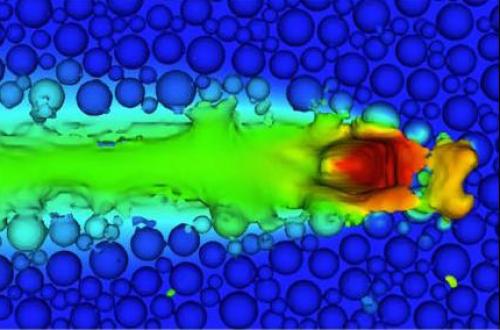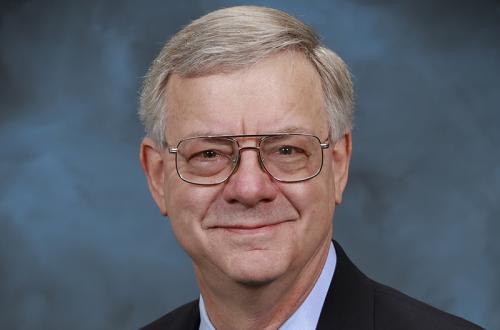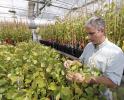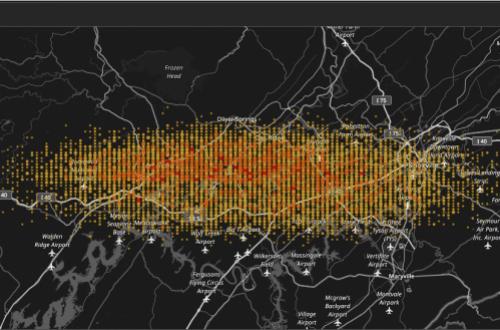All News
- 2017 (13) Apply 2017 filter
- 2016 (237) Apply 2016 filter
- 2015 (197) Apply 2015 filter
- 2014 (182) Apply 2014 filter
- 2013 (170) Apply 2013 filter
- 2012 (169) Apply 2012 filter
- 2011 (182) Apply 2011 filter
- 2010 (150) Apply 2010 filter
- 2009 (146) Apply 2009 filter
- 2008 (147) Apply 2008 filter
- 2007 (134) Apply 2007 filter
- 2006 (127) Apply 2006 filter
- 2005 (151) Apply 2005 filter
- 2004 (134) Apply 2004 filter
- 2003 (85) Apply 2003 filter
- 2002 (52) Apply 2002 filter
- 2001 (68) Apply 2001 filter
- 2000 (83) Apply 2000 filter
- 1999 (51) Apply 1999 filter
- 1998 (96) Apply 1998 filter
- 1997 (109) Apply 1997 filter
- 1996 (113) Apply 1996 filter
- 1995 (166) Apply 1995 filter
- 1994 (19) Apply 1994 filter
ORNL's Communications team works with news media seeking information about the laboratory. Media may use the resources listed below or send questions to news@ornl.gov.
1 - 25 of 2982 Results
January 19, 2017 – When matter changes from solids to liquids to vapors, the changes are called phase transitions. Among the most interesting types are more exotic changes—quantum phase transitions—where the strange properties of quantum mechanics can bring about extraordinary changes in curious ways.

January 19, 2017 – Kai Xiao's work as a staff scientist at ORNL’s Center for Nanophase Materials Science gives him access to some of the world’s most powerful tools to investigate materials as small as one-billionth of a meter, or at the nanoscale.

OAK RIDGE, Tenn., January 17, 2017—Researchers at the Department of Energy’s Oak Ridge National Laboratory (ORNL) have released the largest-ever single nucleotide polymorphism (SNP) dataset of genetic variations in poplar trees, information useful to plant scientists as well as researchers in the fields of biofuels, materials science, and secondary plant

OAK RIDGE, Tenn., January 12, 2017 – UT-Battelle, the managing contractor for the Department of Energy's Oak Ridge National Laboratory, made the final installment of a $250,000 pledge by presenting a $50,000 check in late December to the Emory Valley Center, a community facility that serves people with disabilities.

OAK RIDGE, Tenn., Jan. 9, 2017 – Scientists at the Department of Energy’s Oak Ridge National Laboratory have found a simple, reliable process to capture carbon dioxide directly from ambient air, offering a new option for carbon capture and storage strategies to combat global warming.

January 5, 2017 – Brian Davison has advice for anyone planning a long career in science, gleaned from more than three decades in the field: Appreciate the ‘eureka’ moments, both big and small.

January 5, 2016 — Oak Ridge National Laboratory experts are playing leading roles in the recently established Department of Energy’s (DOE’s) Exascale Computing Project (ECP), a multi-lab initiative responsible for developing the strategy, aligning the resources, and conducting the R&D necessary to achieve the nation’s imperative of delivering exascale computing by 2021.

January 4, 2017 – Strategic thinning of forests in the Pacific Northwest and other parts of the United States plagued by fires could produce benefits on multiple levels, according to Rebecca Novello, a researcher at Oak Ridge National Laboratory.

January 4, 2017 – From machine learning to neuromorphic architectures that enable greater computing flexibility and utility, Oak Ridge National Laboratory researchers are pushing boundaries with Titan.

January 4, 2017 – Researchers at Oak Ridge National Laboratory found a simpler way to measure adhesion between graphene sheets, compared to a sophisticated method used in a 2015

January 4, 2017 – Scientists at Oak Ridge National Laboratory have proposed a novel cryogenic, or low-temperature, memory cell circuit design that may resolve a memory storage bottleneck, accelerating the pathway to exascale and quantum computing.

January 4, 2017 – Hundreds of tables and plots from papers published about superconductivity are the focus of a Journal of Physics: Condensed Matter review paper that condenses this data into a single graph.

January 3, 2017 – Ceramic matrix composite (CMC) materials are made of coated ceramic fibers surrounded by a ceramic matrix. They are tough, lightweight and capable of withstanding temperatures 300–400 degrees F hotter than metal alloys can endure.

OAK RIDGE, Tenn., Dec. 22, 2016 – J. Bryan Lyles, a researcher at the Department of Energy's Oak Ridge National Laboratory, has been recognized by two professional societies for his achievements in computational science.

OAK RIDGE, Tenn., Dec. 22, 2016 – Jeffrey S. Vetter, a researcher at the Department of Energy's Oak Ridge National Laboratory, has been recognized by two professional societies for his achievements in computational science.

December 20, 2016—Scientific discovery can come from anywhere, but few researchers can say the answers to their questions would come from the pea-sized bones in the head of a six-foot-long, 200-pound prehistoric freshwater fish.

December 20, 2016—Carbon dioxide is a key component in the carbon cycle of Earth, both in the atmosphere and in the mantle, or hot layer under Earth’s crust.

December 16, 2016 – It’s been 10 years since the Department of Energy first established a BioEnergy Science Center (BESC) at Oak Ridge National Laboratory, and researcher Gerald “Jerry” Tuskan has used that time and the lab’s and center’s resources and tools to make good on his college dreams of using genomics to study and improve plant species.

TALLAHASSEE, Fla., Dec. 13, 2016 — Deep stores of carbon in northern peatlands may remain stable despite rising temperatures, according to a team of researchers from several U.S.-based institutions.
And that is good news for now, the researchers said.

OAK RIDGE, Tenn., Dec. 13, 2016 – Easo George, one of the world’s foremost authorities on advanced alloy development and theory, has been named the 15th Governor’s Chair at the Department of Energy’s Oak Ridge National Laboratory and the University of Tennessee.

OAK RIDGE, Tenn., Dec. 9, 2016—Neutron scattering studies of a rare earth metal oxide have identified fundamental pieces to the quantum spin liquid puzzle, revealing a better understanding of how and why the magnetic moments within these materials exhibit exotic behaviors such as failing to freeze into an ordered arrangement even near absolute zero temperatures.

December 8, 2016 - Scientists are only beginning to understand the laws that govern the atomic world. Before the 1950s the electrons, neutrons, and protons comprising atoms were the smallest confirmed units of matter.

December 7, 2016 – New Mexico’s Almeria Analytics has added a suite of Oak Ridge National Laboratory software technologies to its arsenal of tools useful for disaster relief, civil engineering, urban planning and homeland security applications.

December 7, 2016 – A technology being developed at Oak Ridge National Laboratory could be a valuable tool for urban planning, emergency management and understanding where people are and how they move.

December 7, 2016 – Researchers at Oak Ridge National Laboratory have developed a novel, nontoxic fluorescent air leak detection system that can find cracks in walls and roofs in existing and new buildings.
